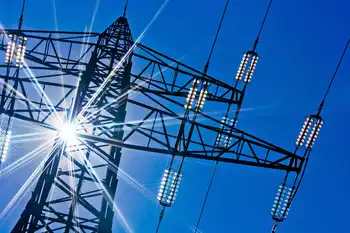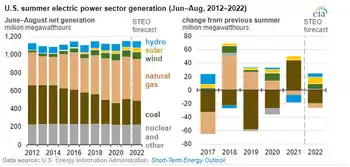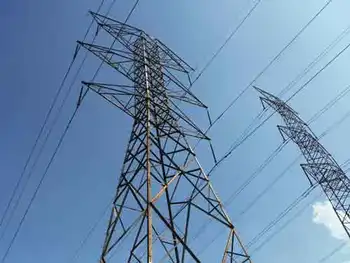Transmission line will open up northwest
By Prince George Citizen
CSA Z463 Electrical Maintenance
Our customized live online or in‑person group training can be delivered to your staff at your location.

- Live Online
- 6 hours Instructor-led
- Group Training Available
The 335-kilometre power line, slated to be complete by the end of 2013, is not an end in itself. Rather, the power line is meant to act as a catalyst for large industrial development.
The 287-kilovolt line will deliver power to a largely untouched area which is expected to result in new mines and hydro power projects being constructed.
A 2008 report commissioned by the Mining Association of B.C. and the Northern Development Initiative Trust has already highlighted the power line has the potential to attract more than $15 billion in investment and create 10,700 jobs from 10 mines.
The construction and operation of the mines is expected to provide benefits throughout the North. Even though the mining region is 600 kilometres to the northwest of Prince George, the city will benefit as a supply and service centre.
Prince George-based WolfTek Industries has been a backer of the project for several years, eager to tap into the benefits the development of new mines offer.
The industrial manufacturer had turned to the mining sector during an extended forestry downturn. The company has already done work for the Endako molybdenum mine west of Prince George and the Gibraltar copper mine south of the city.
And while the forest sector is showing signs of rebounding with a new market emerging in China, the company absolutely embraced the approval granted by the province last week, said WolfTek general manager Jamie Hull. "Any new major industry in our region is vital for all of us. Mining is a big part of our business. It's definitely taken up the downturn in forestry and more."
Global-heavyweight Finning, a heavy-equipment manufacturer, is also looking forward to the potential business the power line will create in the Northern B.C. mining sector. "It's going to have a real positive impact not just on our Prince George operation, but Terrace and Houston," said Finning spokesperson Jeff Howard.
Three years ago, Finning added a mining division to its Prince George location, which had traditionally been focused on the forestry sector. Its Prince George site now services seven mines including Endako and three coal mines in northeastern B.C., overhauling equipment that includes its behemoth CAT 793 rock truck.
The workforce grew 15 per cent to 110 people last year in Prince George. Similar growth is expected this year, said Howard.
It is unlikely that all 10 mines examined in the 2008 report will be built, but the potential is not insignificant.
Mining Association of B.C. president Pierre Gratton says it's certain, at least, that all of the mines will not be built at the same time. But on the other hand, there could also be more discoveries, he said.
"Once the power line is built, it opens up a whole part of the province that has largely not received attention. That's huge long-term for British Columbia," said Gratton.
The benefits to Northern B.C., and communities like Prince George cannot be underestimated, he argued.
For example, there are 100 suppliers from Prince George for Endako's $500-million expansion and upgrade. And, on average, a major metal mine will spend $100 million annually on operations, a significant portion of that spent in local and regional economies, said Gratton.
That money is spent on everything from helicopters and heavy equipment to paper clips, bedding and food. Money is also spent on hotels, restaurants, road work, skilled maintenance and parts. "The economic multiplier is huge," said Gratton.
Initiatives Prince George, the city's economic development agency has also welcomed the provincial approval, stressing the power line's importance as a catalyst for mining and power projects. "That's obviously where the excitement has been," said Kathie Scouten, a senior official with Initiatives Prince George.
The Northern Initiative Development Trust also sees significant economic benefits from providing electricity to the untapped region in the northwest.
It was clear development would not take place without the transmission infrastructure, said Northern Trust CEO Janine North.
The project benefits will flow throughout Northern B.C., including Prince George, she said. "The sourcing goes well beyond the northwest.
The provincial approval — following an environmental assessment and consultations with First Nations — is a major step in getting the northern power line underway.
The federal government still has to sign off, but that is considered a given as Ottawa agreed to delegate its assessment to British Columbia.
BC Hydro has already received bids from contractors and wants to start construction this year.
It is now in the midst of its evaluation process.
The provincial Crown agency wants to have a contractor selected by the end of the month or beginning of April, said BC Hydro senior official Greg Reimer. "We're very hopeful we'll be able to start site clearing and those kinds of things [this year]," said Reimer, executive vice-president of transmission and distribution.
The province had put the power line on hold in 2007 after NovaGold's Galore Creek gold and copper mine was halted. The line had originally been proposed as a partnership with NovaGold, which was going to contribute $158 million.
In September 2008, the project was resurrected when B.C. Premier Gordon Campbell said the province would put up $10 million to put the power line through an environmental assessment.
Communities in Northern B.C., including Prince George, had been calling on the provincial government to keep the project moving forward, at a minimum, carrying out the environmental assessment.
The project received a further boost in September 2009 when Prime Minister Stephen Harper set aside a $130-million federal contribution for the power line.
A further capital injection was provided in the spring of 2010, when AltaGas reached an agreement with BC Hydro to provide $180 million for the project. The deal included an electricity purchase agreement for AltaGas' $700-million Forest Kerr clean energy project near Bob Quinn Lake.
The lake is the end point of the power line that starts near Terrace and follows a portion of Highway 37.
At least one mining company is already readying itself for the completion of the power line.
Imperial Metals' $443-million Red Chris gold-copper project has provincial and federal regulatory approval, putting it ahead of other potential projects. The company hopes to start production at the same time the power line is complete at end of 2013. "The minute they are finished, we want to hook up," said Imperial Metals president and CEO Bryan Kynoch.
The Red Chris project lies about 115 kilometres beyond the end point of the transmission line, but Kynoch does not see that as a problem for developing the project. He pointed out the company built a 120-kilometre transmission line to provide power to its Huckleberry gold and copper mine south of Houston in north-central B.C.
The power line is also favoured by support from First Nations.
Agreements that accommodate First Nations' interest along the 335-kilometre power line are considered critical to getting the project off the ground, in part, because most of the First Nations have not settled treaties.
Two First Nations have already provided endorsements of the power line through impact-benefit agreements: the Kitselas and the Metlakala.
The Nisga'a Nation legislature will be voting on another impact-benefit agreement. Its leadership is calling for acceptance of the agreement, which allows the BC Hydro to use a preferred route through the Nisga'a Memorial Lava Bed Park. The Nisga'a, unlike other First Nations, have settled a modern treaty that gives them rights over 2,000 square kilometres of land.
Other consultations continue, including with the Tahltan Nation, whose territory covers the northern portion of the power line and also the area where the majority of mining and power-project will be located.
Tahltan Central Council chair Annita McPhee said their support hinges on a ratification vote set for April. It's why the focus now is helping the nation's 5,000 members become as informed as possible on the project potential benefits and impacts. "It's our choice, and we decide as a people," said McPhee.
Reimer, the BC Hydro official, said the Crown agency remains hopeful they will come to an agreement with the remaining First Nations. "Our view is the First Nations in the area are folks that have a kind of legitimate interest. And we have not only legal, but moral, obligations in terms of our relationship with them. And we'd like to conclude positive agreements prior to moving forward," said Reimer.
Forestry and Mining Minister Pat Bell said he believes BC Hydro has done an exceptional job of working with all First Nations, finding ways to create benefits, for example, through job creation and providing electricity to their communities.
The province's new policy to share revenue with First Nations on new mines and major expansions is also a positive, he stressed.
"I think people in the region are excited about the opportunities, and First Nations are no exception to that," said Bell, the MLA for Prince George-Mackenzie.











